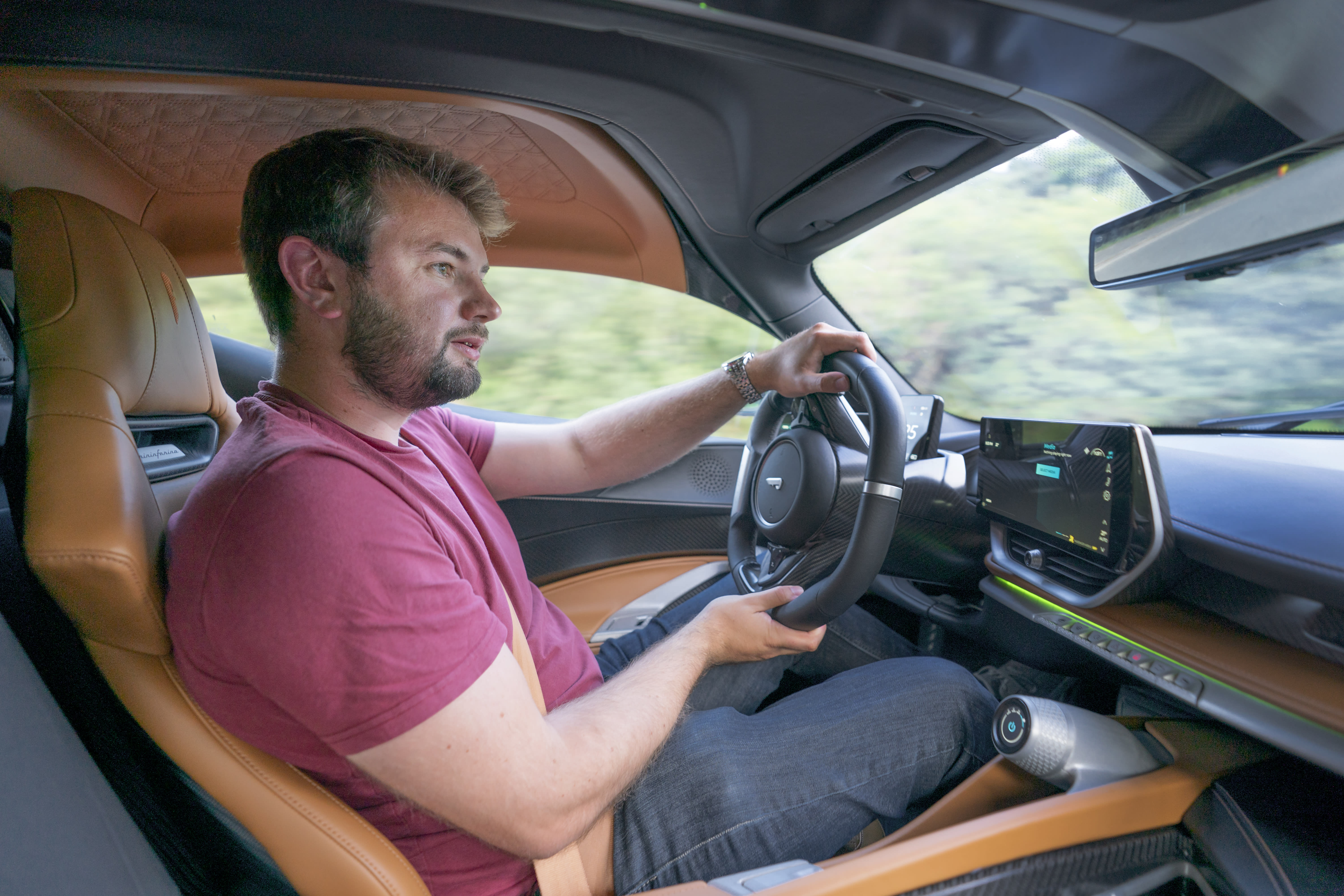
Peugeot 308 SW Review

Introduction
If you are into cars and happen to be the type of person who tends to speak your mind dismissively, you will probably be happy to declare that the words ‘exciting’ and ‘Peugeot’ don’t really go together.
But trust us when we say “don’t turn the page yet” because the new Peugeot 308 SW (which, if you’re wondering, stands for Sports Wagon) is a head-turner. No, really. It is.
With manufacturers such as Genesis and Polestar pushing the boundaries of vehicular aesthetics, the Peugeot 308 SW has arguably followed suit.
Select's rating score* - 3.9 / 5
At A Glance
The front end is a little controversial. It features a prominent grille, but the grille's patterns get smaller towards the middle, which creates a sort of ‘time warp’ effect. The grille, from its sides, spreads upwards to connect to the headlights, which are thin and angled for aggressiveness. Meanwhile, day-running lights run down the car’s outer extremities like a jagged claw on each side.
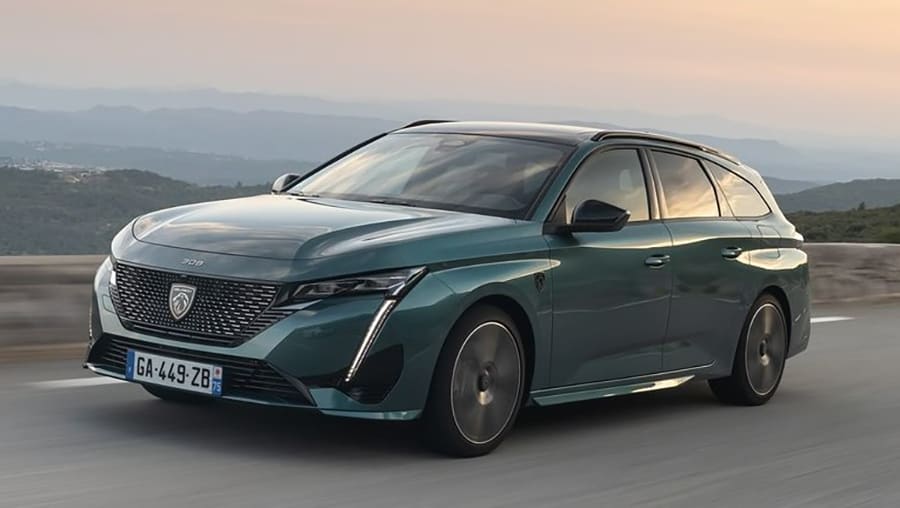
It looks strange and, possibly due to the low number plate positioning, even a little disproportionate. But it is unique - and will mean that a first glance at it will result in a prolonged stare as you try to work out if you like the model.
Down the side, the sportiness continues. The car exhibits swept-back rear windows and a sloping roofline, which is somewhat hidden by a rear spoiler overhanging the back windscreen.
In addition, there is a sizeable crease lower down the doors, showing a hefty indentation, while lines higher up accentuate the shape towards the rear.
The aggressive athleticism theme continues with two taillights. Each light is subtly divided into three sections, reaching around to cut into the sides.
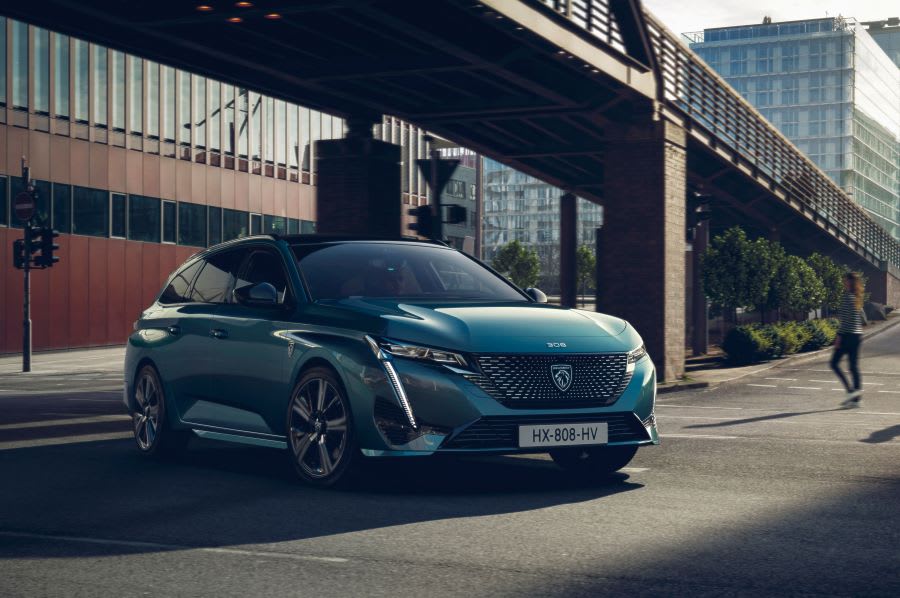
At the same time, there’s a widened hexagonal shape that houses the number plate and spans the width of the rear. Then there is the rear bumper that sprouts outwards in a defined form, along with two wide exhaust tips below it.
While it is difficult to call the 308 SW beautiful, it is undoubtedly cool. The design is bold, macho, and assertive - and will likely appeal to many. In an era where the importance of a car’s looks still hasn’t caught on with some manufacturers, you can’t say Peugeot hasn’t tried.
A lot of careful thought has been put into the car’s appearance. The cosmetics make rivals look bland, so, in that respect, this is a big win for Peugeot.
But is it as successful in other areas? Being a station wagon, the 308 SW needs to be practical, good to drive, suitable for families, and cheap to run. So, ticking all of those boxes simultaneously is a big ask.
Key Features
The Peugeot 308 SW offers a generous choice of five trims.
Entry-level is Active Premium trim. This grade includes 16-inch alloys, LED headlights, a leather steering wheel, an active safety brake, Peugeot's i-Cockpit, and a 10-inch touchscreen.
Next up is Allure, which ups the alloys to 17-inches and adds Peugeot’s i-Connect system, a 180-degree reversing camera and 3D satellite navigation.
If that is not enough, Allure Premium bolts on a drive assist pack (which includes automatic emergency braking and adaptive cruise control, meaning it will keep you a safe distance from the vehicle in front). You also get keyless entry and go, rear cross-traffic alert, plus Android Auto and Apple Car Play.

GT trim increases the size of the alloys to 18-inches and adds GT badging, matrix LED headlights, a 3D i-Cockpit, and a heated steering wheel.
Finally, the top-of-the-range GT Premium adds a 360-degree HD colour camera and a drive assist pack plus (which adds a stop/go function to the adaptive cruise control, so it will slow down to a stop and then set off again itself). You also get heated front seats with a massage function.
There are various options for powertrains.
A 1.2-litre three-cylinder petrol engine is available, producing 131PS. Alternatively, there is a 1.5-litre four-cylinder diesel engine, which also produces 131PS.
There are also two plug-in hybrids on offer. Both are 1.6-litre petrol engines which, when combined with their electric motors, produce 180PS. Meanwhile, the higher-powered one delivers 225PS, thanks to an uprated engine.
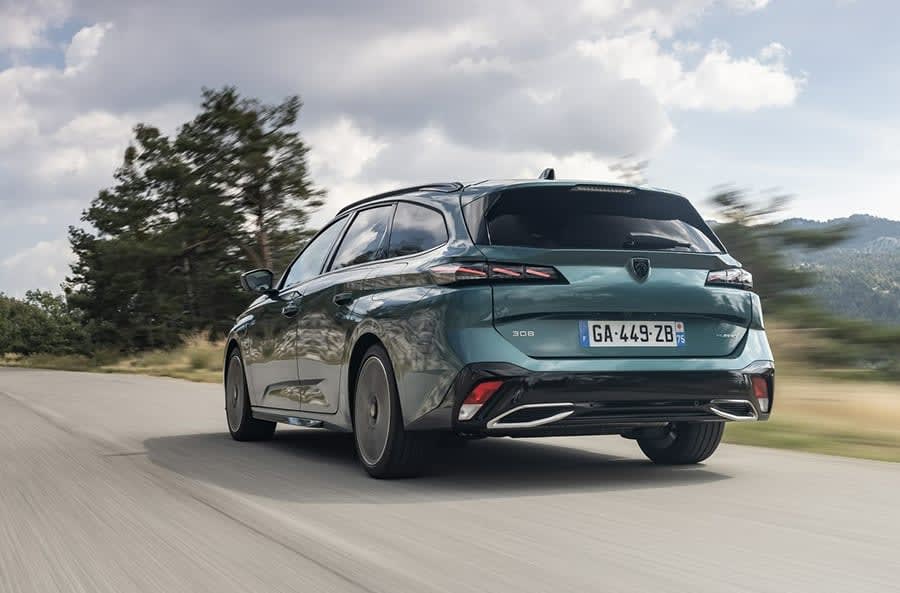
The petrol powerplant is available on all trims, although the diesel isn’t offered with the flagship GT Premium grade. At the other end of the scale, the hybrid isn't available with the entry-level Active Premium trim. The lower-powered hybrid is available on Allure and Allure Premium trim, while the lower and higher-powered hybrids are available on GT and GT Premium versions.
Performance & Drive
All four powertrains are decent and well refined.
The hybrids, helped by their 12.4kWh battery packs, provide great acceleration lower down the rev range, especially the higher-powered one. You can run them on all-electric power (the claimed range is 41 miles for both versions), but you will need to drive with a feathered touch on the accelerator pedal. Why? Because the engine will automatically start up whenever you demand any more than a modest amount of grunt.
The higher-powered hybrid is a lot of fun. Although, admittedly, in a family estate car, 225PS might be excessive, especially as both hybrids are significantly more expensive than the diesel and petrol models.
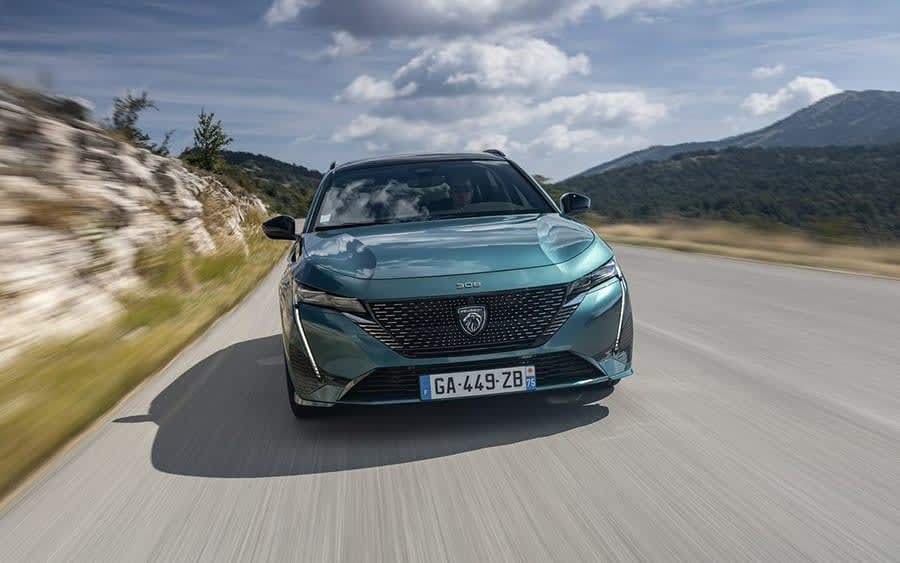
Both the petrol and diesel engines are reasonably quiet and refined. But, having tested them after the hybrid, they felt a bit lacking in outright pace. Nevertheless, both variants will meet the needs of most families. Well, that is unless the person who regularly drives the car wants the additional performance provided by the hybrid powertrains.
In terms of figures, the petrol will get from nought to 60mph in 9.6-seconds and on to a top speed of 130mph. The diesel is slightly slower, however. It manages the same in 10.6-seconds and tops out at 129mph. The 180PS hybrid, meanwhile, will get you to 60mph in around 7.5-seconds, maxing out at 140mph, while the 225PS hybrid can do the same in 7.3-seconds, reaching 146mph.
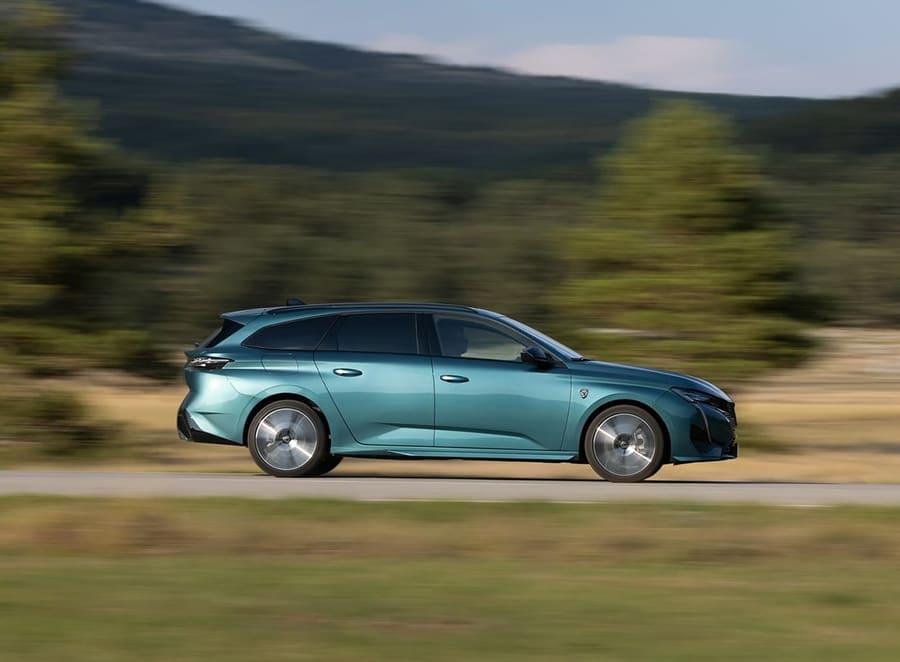
Peugeot has done a top job with the 308 SW in terms of ride comfort. The model feels comfortable and performs admirably well when smoothing out bumps and creases in the road. However, it isn't entirely on the same level as the likes of the Skoda Octavia Estate, which is similarly priced.
After testing all four powertrains, we were left to conclude that the extra weight of the hybrids – due to the electric motor and batteries – does spoil the handling. The petrol and diesel are the winners when it comes to comfort, too, although that's not to say the hybrids do a lousy job.
In addition, you can always ask for smaller alloy wheels if comfort is an important area, as the 18-inch wheels on our hybrid test cars also play their part in making for a firmer ride.
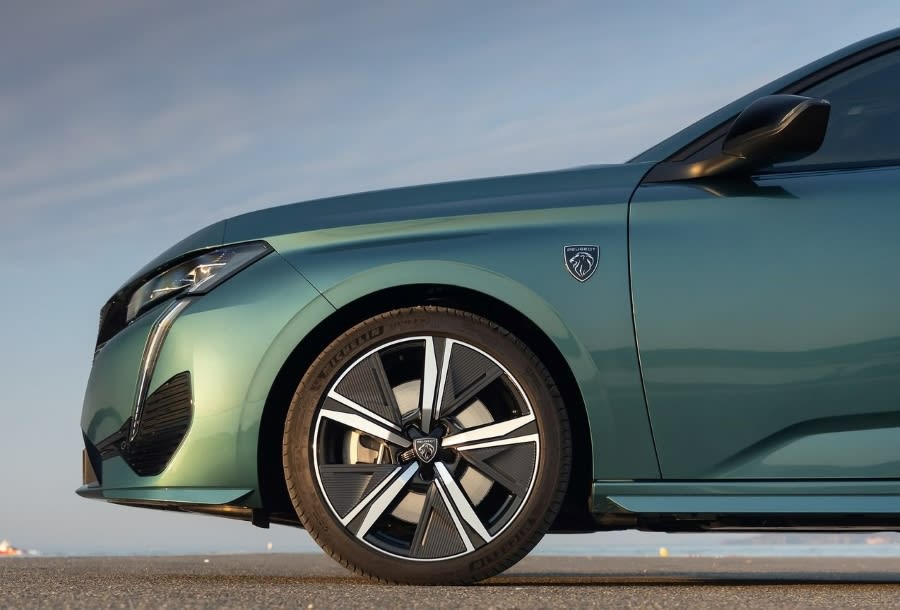
The Peugeot handles well and feels well-planted and stable at all speeds, while the steering is light. However, one frustration is that it is almost as light at higher rates, so it can be on the sensitive side. But, despite this, the 308 SW is keen to turn in and doesn't understeer much on entry. As a result, it is pleasing on twisty B-roads, although it still isn’t the most exciting or engaging to drive.
Peugeot has installed excellent soundproofing, too, as the wind and road noise are limited and never a problem, even at higher speeds on motorways.
However, the regenerative braking, which effectively applies the brakes when you take your toe off the accelerator to put charge back into the batteries, feels inconsistent and takes some getting used to.
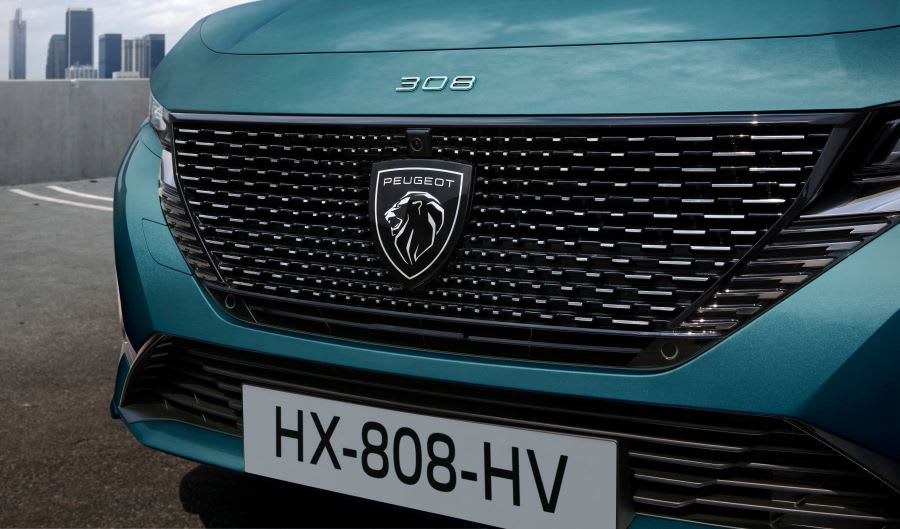
Running Costs & Emissions
The 1.2-litre petrol engine (known as the PureTech 130) manages 50mpg, producing 122g/km of CO2.
The 1.5-litre diesel (known as the BlueHDi 130) will suit those who want the extra economy without forking out the additional money for the hybrid. It manages 61mpg and is better for the environment in terms of carbon emissions, producing 114g/km of CO2.
These figures are dwarfed by the hybrids, though. The 180PS hybrid can do up to 257mpg, producing just 25g/km CO2, while the 225PS hybrid is capable of 235mpg, generating 26g/km of CO2.
However, achieving such figures with the hybrids will depend on you keeping the batteries charged up.
Running costs are likely to be reasonable, with a full-service costing around £200.
Interior & Technology
The Peugeot 308 SW’s interior looks well-designed and attractive, albeit not overly luxurious.
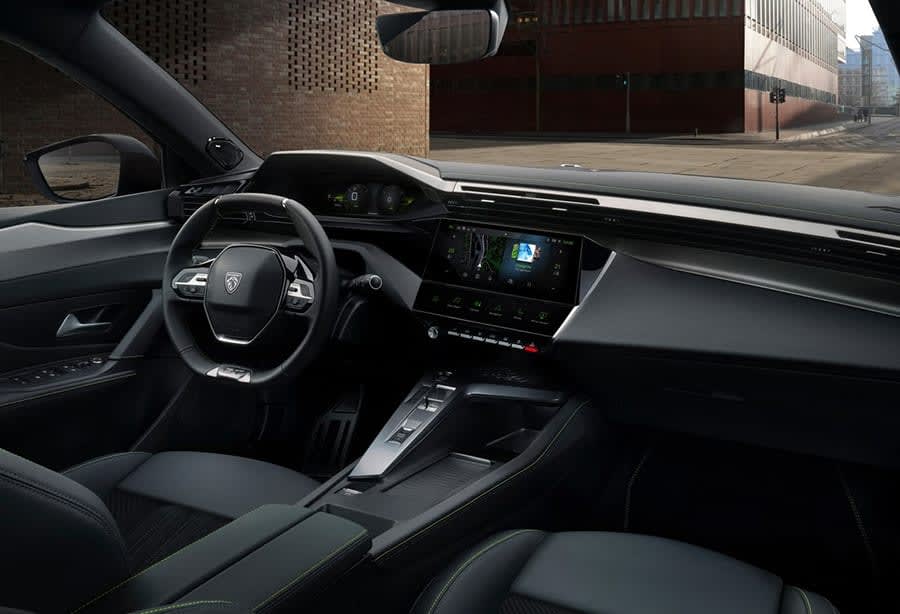
There are plenty of angular features, including the steering wheel, which is both flat-bottomed and flat-topped. In addition, the i-Cockpit digital instrument display has an angular hood on top of it, unlike the rounded ones you get on most cars. At the same time, the infotainment screen is angled slightly towards the driver, which is helpful.
You will find lots of soft-to-the-touch plush surfaces, although cheaper, hard, and scratchy plastics are dotted about the place. Most of the plastics are positioned lower down, so they are mainly out of sight, but they are there. Nevertheless, the build quality seems reasonably good, and it is a far more pleasant interior than you would imagine when you hear the word 'Peugeot'.
The centre console is attractive, with part of it provided in a grey finish in our test car, contrasting against the black and dark greys elsewhere. Meanwhile, there are plenty of glossy piano black surfaces which make up for the lack of silver elsewhere, making the cabin look modern and stylish.
The infotainment system is very clear, features attractive graphics and is feature-rich. It isn't the slickest of systems in terms of its responsiveness, but it is not bad either. It isn't the easiest to use when on the move. However, voice recognition is included and works quite well when asking the car to perform certain functions, such as changing the temperature. This helps makes operating it a bit simpler.
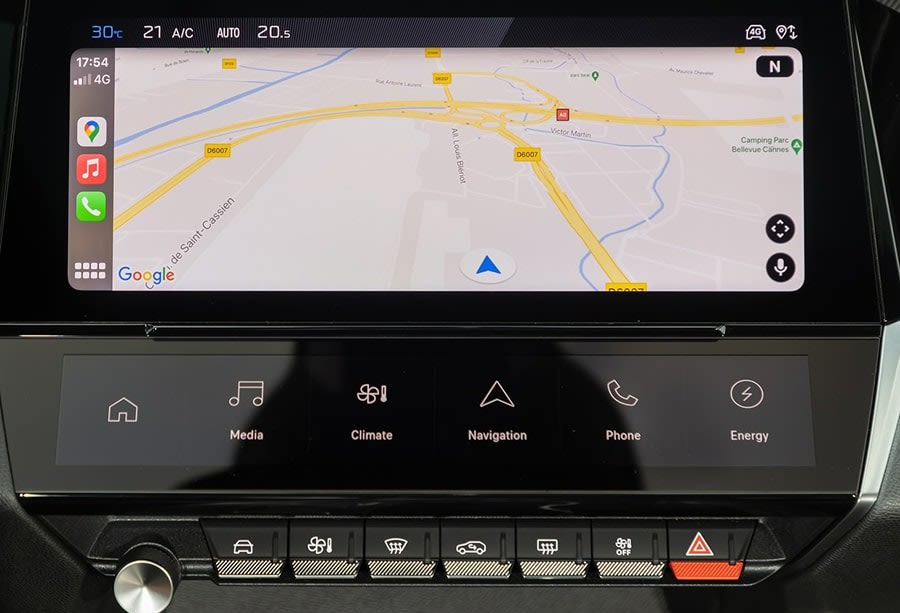
Apple CarPlay/Android Auto connectivity is included as standard, so you can use that instead if you wish.
There aren't many physical buttons and dials, but some touch-sensitive shortcut switches are directly underneath the infotainment screen on the Allure trim and upwards. Plus, you will find some valuable buttons on the steering wheel.
Visibility is good from the front windscreen thanks to a sizeable window and thin pillars. Mind you, the curved rear windscreen means there are thicker pillars that restrict your view out of the back somewhat.
Space & Practicality
It is simple to find a suitable driving position, as there is plenty of travel in the steering wheel and the driver’s seat, so they can be adjusted with ease.
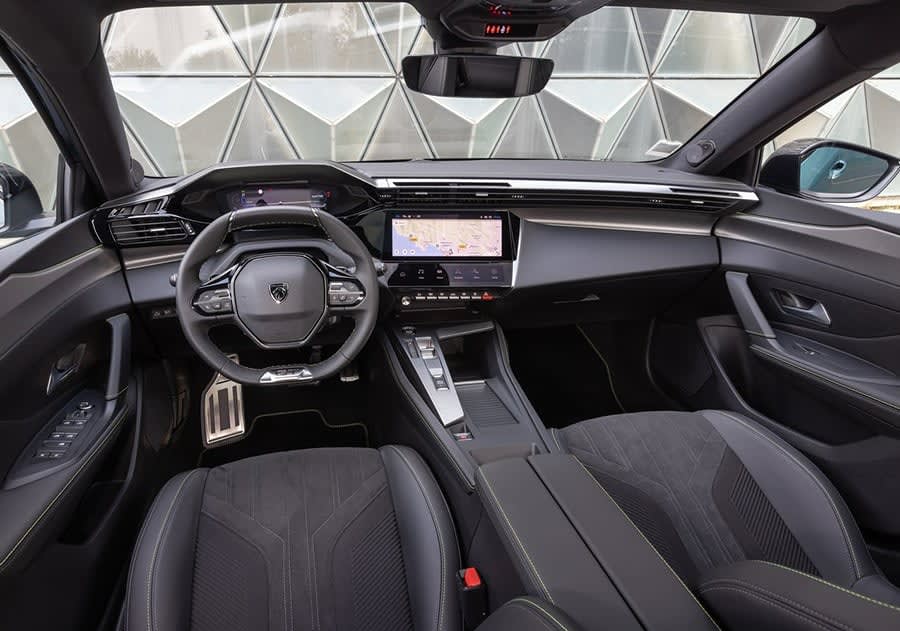
The front is spacious, and even taller drivers shouldn't struggle for space. There is a lot of room to spread yourself out, and, despite the plethora of technology surrounding you, you don't feel claustrophobic.
The amount of space is decent in the back, although taller passengers might struggle a bit for legroom. Meanwhile, headroom should be fine unless you are well over six feet tall. Three children in the back certainly won’t be an issue.
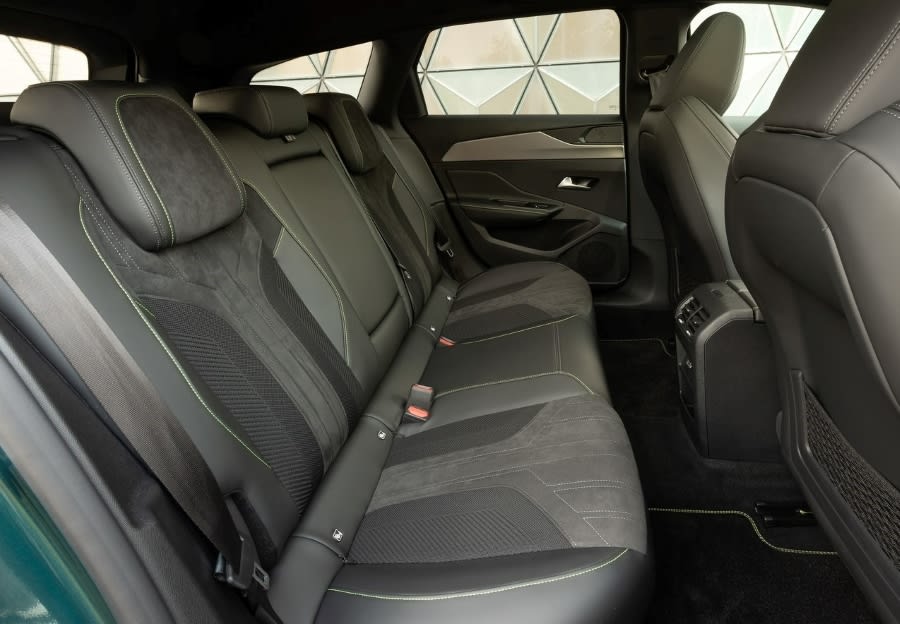
There is quite a lot of storage space inside the cabin, too, with generously sized door bins and a large cubby in the centre console. The wireless phone charger is positioned at the front underneath the infotainment system, while you will find four USB-C ports. You get two in the front and two in the back - so the kids can keep their tablets charged up, as long as you have got the correct leads to hand.
For boot space, you get 608-litres, which expands to 1,634-litres with the rear seats down. However, this is reduced slightly if you have one of the hybrid versions, as the batteries are stored underneath the floor. The Peugeot's seats fold in a 60/40 arrangement and can be easily lowered by pulling a couple of handles in the boot.
There is a small boot lip, but it shouldn’t get in the way too much if you need to lift heavier or bulkier items in and out.
.jpg)
Safety
The 308 SW hasn’t yet been tested by Euro NCAP – the organisation that performs stringent crash-testing on most new vehicles in Europe. The outgoing hatchback version of the 308 was tested and scored five stars, but that was nearly a decade ago, and this rating is no longer valid.
However, the last eight Peugeot models to be assessed scored four or five stars. Therefore, we have little doubt that the 308 SW will do well, even though Euro NCAP has made its testing criteria tougher since the last one was evaluated.
The 308 SW also has a lot of safety technology included as standard. Tech includes blind-spot assistance, automatic emergency braking, active safety brake, lane-keeping assist and traffic sign recognition. Meanwhile, Allure trim and above have a 180-degree reversing camera, and Allure Premium trim and above get rear cross-traffic alert. Top-of-the-range GT Premium upgrades the camera to 360-degrees and HD, too.
Numerous optional extras will add even more safety kit, including semi-automatic lane-change assist.
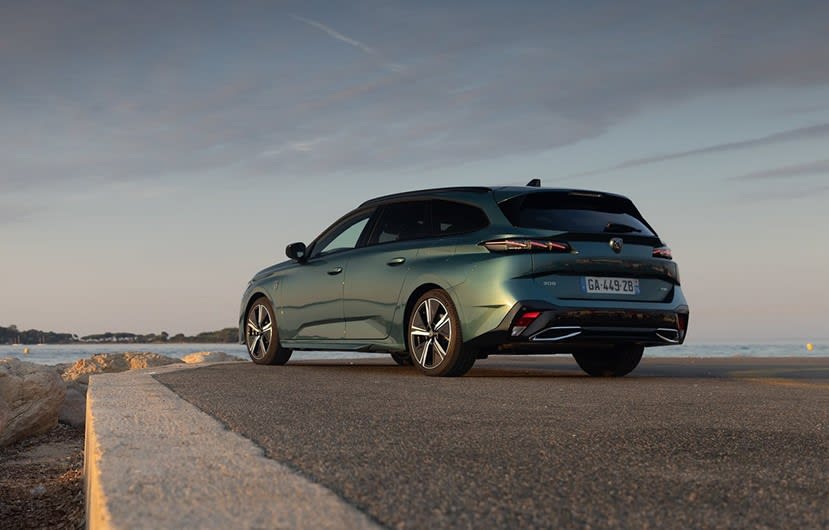
Options
A grey-blue is the default shade for exterior colours unless you are willing to pay a few hundred pounds for light grey, black or dark grey. Pearlescent white or dark red will cost you even more.
Alcantara trim is included as standard with leather effect, but if you want genuine leather, it is a four-figure sum.
Also, a panoramic roof is a four-figure sum, while a premium hi-fi system and a heated front windscreen will also set you back a few hundred notes.
Furthermore, if you need to tow a caravan with your Sports Wagon, a tow bar will set you back a little extra.
Rival Cars
The likes of the Ford Focus Estate, Seat Leon Estate and Skoda Octavia Estate are the alternatives that should be on your list if you are in the market for leasing a car like the Peugeot 308 SW.
Vauxhall has just launched a new and much-improved Astra hatchback, too, with a Sports Tourer version also arriving this summer. So that might be worth waiting for.
If you are environmentally conscious and the hybrid versions don’t go far enough, Peugeot will be releasing an all-electric e-308 SW next year.
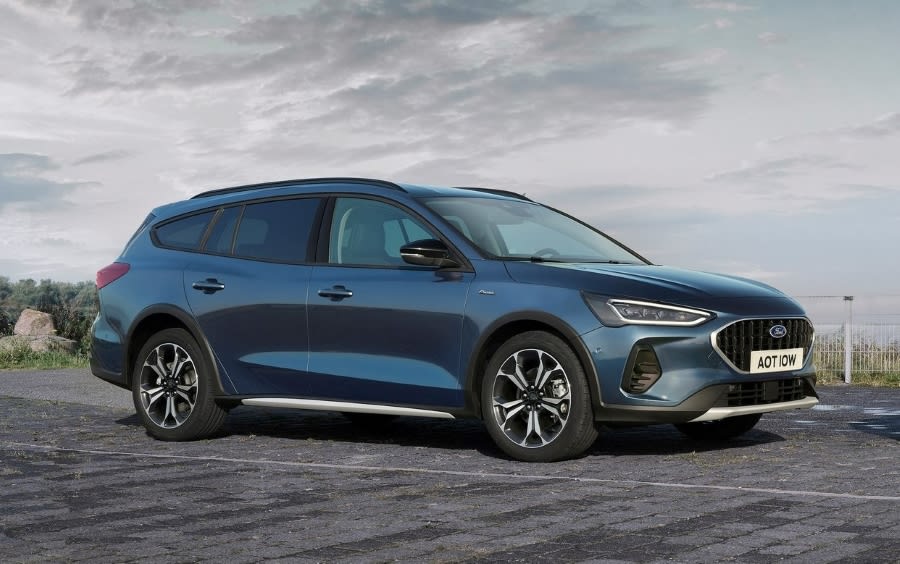
Verdict & Next Steps
The Peugeot 308 SW makes a compelling case. It is a very competitive package that is worthy of serious consideration.
The French machine is spacious and practical. Plus, with two economical fossil-fuelled variants, plus two plug-in hybrids to choose from, it is an attractive choice for those seeking lower running costs, especially with those head-turning looks.
Other challengers offer more rear-seat space, and the regenerative braking on the Peugeot feels a little inconsistent.
Nevertheless, the 308 SW is classy, comfortable, well-equipped and has decent handling.
The non-hybrids are good and will probably suffice for most, especially as the hybrids are still a bit on the pricey side. But of course, the idea is you will make it back by slashing your running costs.
Regardless, the 308 SW ticks all the right boxes: it does everything rather well.
Where to next?
View our latest Peugeot 308 Leasing Deal - from just £299.60 per month inc VAT**
Looking for a great leasing deal? Check out our incredible range of Special Offers
New estate car? Read our latest Car Reviews and find the right model for you
Want to know more about leasing? Take a look at our comprehensive Leasing Guides
Interested in everything motoring? Why not catch up on all the latest Car Leasing News.
*Score based on Select’s unique meta score analysis, taking into account the UK’s top five leading independent car website reviews of the Peugeot 308 Estate
**Correct as of 21/04/2022. Based on 9 months initial payment, 5,000 miles over a 48 month lease. Initial payment equivalent to 9 monthly payments or £2,696.40 Ts and Cs apply. Credit is subject to status.
